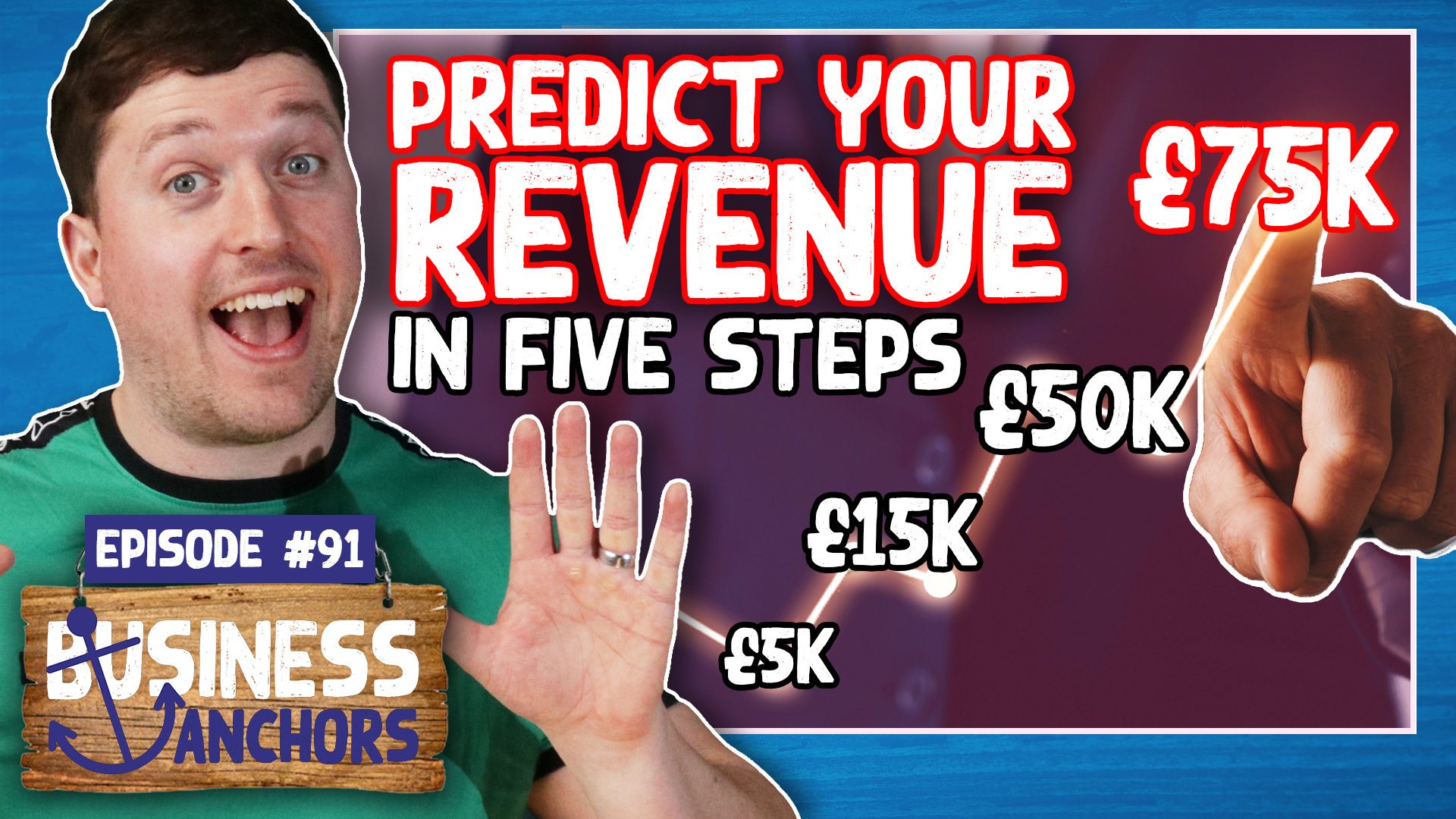If you’re wondering how to predict your revenue and you’re tired of going month to month, not accurately knowing what your revenue will be, this episode (one of our most value-adding to-date) is for you!
Over the years we’ve developed a system to predict our revenue and, in this podcast, we’re sharing it with you. Notepads at the ready, this step-by-step, actionable podcast is about to blow your mind…
00:00 – 01:09 Intro
01:10 – 05:19 What is predictable revenue?
05:20– 06:07 Step 1: Set revenue goals
06:08 – 07:32 Step 2: Set up a process (and tools) to track leads
07:33 – 10:24 Step 3: Work out the value of an unconverted lead
10:25 – 11:56 Step 4: Work out how many unconverted leads you need to achieve your sales targets
11:57 – 13:19 Step 5: Track performance every week
13:20 – 18:17 Use the Entrepreneurs Operating System to track progress
18:18– 18:28 Outro

0:00 Pat
Hi, Pat, the podcast editor here. How can you possibly predict the future of your company? Well, today, Dan and Lloyd take us through their five steps on how to predict the revenue of your company, regardless of the size.
00:14 Dan
If you run a business or you’re in marketing, and you don’t currently have a predictable way of knowing the revenue, it’s coming into the business, these steps that we’re going to share are going to be incredibly valuable to you as they have been for us.
0:26 Pat
Now, as if five steps weren’t enough, you’ll also hear about actions that you can take to ensure that your business adapts appropriately to its projected future.
00:35 Lloyd
Once you get to this value of understanding how much an unconverted lead is worth to your business. You know, if that phone rings, on average, that phone call is worth 300 pounds.
0:45 Pat
So how can these five simple steps help you predict the future? Stay tuned to find out. Right, let’s get the show on the road. This is episode 91 of the business anchors podcast.
01:10 Dan
What is predictable revenue? And why is generating it so important for business owners, Lloyd?
01:15 Lloyd
Because I think we have a superpower in this business now of accurately knowing what our future income to the businesses is. And that just gives you so much freedom to make the best decisions for your business.
01:30 Dan
It didn’t use to be like this though did it?
01:31 Lloyd
No, we didn’t know how much money was coming in tomorrow. Yeah, yeah, we come a long way with it. And it’s majorly helped our business in the last few years.
So I guess we have gone from the point of having no idea what money will be coming in the future, whether it’s going to be good or bad to have this process of being in, I think a process that almost any business can have to accurately predict our future income.
01:59 Dan
I remember it almost being a complete shock that some months we’d get to the month and just be like, Oh, what are we doing this month? How are we paying the bills, and just it all being a big surprise? Yeah. And we kind of just used to do things as and when, Oh, someone wants a bit of work done, we’ll do it.
Whereas now we’ve got a very systemized approach that gives us warning signs, three, four months in advance to know if we’re not doing the right things, hitting the right numbers to be having a sustainable business to make this work.
02:28 Lloyd
If you think like if you follow the steps that we’re gonna go through, so that you can do this to being able to accurately predict the income that you’re going to have in the future means you can make decisions like, oh, okay, well, I need to start recruiting people because I need more staff in three months, or the other way, obviously negative, but oh, if I don’t change something, I can’t pay all the bills in three months, because I can see that the income is going to drop. So we need to work this out. Or we need to get rid of people or you know, whatever needs to happen.
So it can be a lifesaver. Also for investing in your business. Like, you know, if you know that your income is going to be higher, and you’re going to have spare cash in the business in future months, you can go Oh, actually, well, we were talking about getting a new van. And that’s going to be a great investment for the business and mean we can deliver our products 20% more efficiently.
Or, you know, for us with the studio that we’ve built for the podcast at the point where we predicted, we can see that our income, we’re going to have the spare cash. And we invested in this kind of unit down here about 20,000 pounds in various things to improve our business. And we couldn’t have done that. Or we would have had to take massive risks doing that. If we didn’t know what our income would be in the future.
03:48 Dan
I don’t just think it’s the decision-making benefits. Like you’ve said, though, for me, whose responsibilities are the sales and marketing for our business? I think it also dramatically reduces stress. Because the stress I used to get when we get to a month, the Lloyd would be like what so what’s going on with sales and, like, didn’t know what was going on, we can, you know, we didn’t have enough to do what you needed to do.
Now, it’s so far in advance that the stress levels, you know, may increase slightly, because we know right, something needs to change because, in three months, we’re not going to be having what we need to have.
04:28 Lloyd
We have things in place now where every Friday, so once a week, forever. We have signs (what we will call lead indicators) that I’ll go into in a minute and we can see like oh that’s going to affect the business positively or negatively in three or four months. And having that like you’re saying reduces stress for everyone and knowing where we are and having the time to make decisions, so you don’t get in a stressful situation. It’s like a superpower.
04:57 Dan
So if you run a business or you’re in marketing, and you don’t currently have a predictable way of knowing the revenue that’s coming into the business, the steps that we’re going to share are going to be incredibly valuable to you, as they have been for us.
05:12 Lloyd
So Dan, the steps that give you this superpower, please tell the lovely business anchors, listeners.
05:20 Dan
So there are five steps to ensure you’re generating predictable revenue for your business. The first one is all about setting goals to understanding if you’re achieving the revenue targets you need to achieve, you need to have the goals for that, first of all, so think of what your revenue goals are each month to hit your revenue goal for the year and break that down. Most people will have this already. But if you haven’t got any kind of goal, set that out.
05:48 Lloyd
If you don’t have that already, just work out a number that to break even our business needs this much. You know, a goal, that means we’ll be earning a good amount will be this much of a stretch goal will be this much just so you can see where you are on the sliding scale on the absolute minimum, you need to cover your costs and survive.
06:08 Dan
Yeah, definitely. And once you set that goal, step two is to set up some kind of process if you don’t have it already to track the leads coming into your business. Now there’s a great tool we use called HubSpot. There’s a free version, which everyone should give a go, it’s good where you can. It’s like a CRM system customer relationship management tool where whenever a lead comes in, you can input that lead.
So there are all tracks digitally, and you’ve got all of that data there. So you need some kind of way of tracking how many leads are coming in, you may already have this, if you have already been tracking this kind of data, then that’s great. But if you haven’t, you need some data to make this work.
06:48 Lloyd
And this is relevant to businesses of all sizes. So whether you’ve got a sales team in an in a massive office, and 70 people are selling for your business, or if you’re someone who makes model trains, and you’re one guy who just gets people, phoning them, like, don’t think I don’t get business leads, I just get you to know, few people ring.
They’re like they are your leads, if somebody if Tommy’s calling up going, I’m thinking I might get you to produce another big, big old steam train. I don’t know anything about like they that’s what you’d be recording, right? Tommy’s called and said he might be interested in the big old steam train.
07:29 Dan
Yeah, exactly.
07:31 Lloyd
Tommy loves his trains.
07:33 Dan
So once you’ve so you’ve set your goals, you’ve tracked the leads coming to your business, and you probably need 1-3 months of data to make this work. But the more data you have, the better. So you’ve been tracking leads for a month or three months or a year, you’ve got that data, you know, right? Every month, I’m generating X amount of leads, on average, the next thing you need to do number three, is working out the value of an unconverted lead. And this will become apparent why this is important in a second.
So the way you work out the value of an unconverted lead is to take the total revenue generated in that period. So let’s say in your first quarter, you generated 3000 pounds in revenue, take that number, then divide that by the number of leads that have come in in that period. Now we know not all of them have converted, but it’s the total revenue figure divided by the total number of leads. So let’s try to make this simple.
Let’s say in the first quarter, you generated 3000 pounds, and you’ve had 10 leads, trying to keep these numbers simple so that I can do the math, you divide the total revenue by the number of leads. So 3000 divided by 10. So you know, an unconverted lead is worth 300 pounds. Does that make sense Lloyd?
08:54 Lloyd
Yes, it does. And so depending on your business, you may have a business where you have 1000 leads, and only two or three of them convert. Or you might have a business where like, you have 10 leads, and eight of them convert, but the same calculation will work. So no matter how many customers you have to convert to get to that, it still works out.
Yeah. And this is amazing. Also, once you get to this value of understanding how much an unconverted lead is worth to your business, that means whether you’re Tommy where this model trains, you know if that phone rings, Tommy wasn’t making the trains, Tommy was this customer, if you’re Brian, and Tommy’s calling you when Tommy calls you, you know that on average that phone calls worth 300 pounds.
So if that Phone’s ringing five times this week from different people, you know. On average, that’s gonna be worth 1500. And it might be that one week that’s worth 1000. And the next week, it’s worth 2000 Because, you know, you have good and bad weeks, but over time, you’ll know that it’s at that level.
Yeah, and yeah, that’s just such a, such a magical moment when you get to that point because even it takes the stress away from, oh, I hope I convert these deals this way, oh, I need to sell stuff because if the signs are still showing aren’t getting enough leads in, I know that over time, it’s all going to work out because I know that’s how much it’s worth, it reduces your stress and you can know you’re in a good position.
10:24 Dan
And then what you can do in step number four is work out how many unconverted leads you need to achieve your sales targets. So let’s say as we were saying, an unconverted lead is worth 300 pounds. And let’s just say your sales targets are 3000 pounds a month, you know, you need 10 unconverted leads to generate the 3000 pounds a month to hit your sales targets. So if you’re not generating 10 leads a month, you know, you’re gonna get behind with your sales targets.
And that’s what we call a lead indicator. So that’s something to show you and we track this every week in our weekly meetings, I have to report to the team how many leads have we generated this month, or sorry, this week, to see if we’re on target for our weekly goal. And if we’re not, then we can start to make changes.
11:14 Lloyd
Way that this allows us to predict the future. Like I was saying, it’s because we know from when the phone rings, or we get a message through our website or a LinkedIn DM of that lead initially, we know that it usually takes three or four months until that affects our bank account, basically, the money in the bank.
By the time you’ve gone through the process of converting or not converting those leads to completing a project and then paying for it, we’ve got three or four months to make changes and adapt if we need to. So if we’ve had one week, where we know that we know we need 10 leads, is it a week or a month we need to at least 10 leads, Dan?
11:59 Dan
Am I can’t remember.
11:59 Lloyd
All right, in this made-up example, we need 10 leads in a month. So that’s two and a half a week, a week or two a week, roughly. So if we’ve had a week where we’ve got no leads, we know Oh, hang on in three or four months. If this continues, we’re gonna be short here. Or if we’re like hang on the last three weeks, we’ve had five leads each week, we know That’s double what we need in three or four months, we are likely to be able to hit double our targets, if we can do so.
So Brian, at that point goes Hang on. Brian’s my lead indicators are showing, I could have doubled the income in three or four months. I need to hire Sondra to help me with these model trains. And I know that rather than 10 minutes before the sale comes in.
12:47 Dan
And that is step five, which you’ve just explained, sorry, step five is tracking this every week. And then make appropriate changes if needed to ensure you’re going to hit those numbers in the future weeks. And like you said that could be it could be making changes to your marketing strategy.
It could be trying and tweaking different things, it could be making more calls, you know, trying to make those changes so that you know that you’re going to hit the numbers you need to if you just sit there and look at the numbers and know that oh, we’re not achieving what we need to achieve and not doing anything, nothing’s going to change.
13:19 Lloyd
If you’re in a bigger business as well. And you have the resource, you may have things that you know can increase or increase leads if you need them. So you may know that, okay, our Google PPC campaign, we know we have to pump about this much money into it to get this many leads. And if leads are looking low, then you can have that conversation with your manager, whoever the decision-maker and say. Look, we’re looking pretty low.
If the team’s going to have enough work to do in three months, we need to increase the leads, let’s increase our budget for the PPC campaign, and make sure that we fill that gap. So we don’t have a room of 30 people that are working at 50% capacity.
14:01 Dan
And I think a really important thing to make this all work is having that process where you’re checking the numbers regularly. Like Lloyd mentioned, the way we do this is in our weekly meetings, our weekly team meetings and we use a system from the entrepreneurs operating system where we’ve got a scorecard to great like rank everything we’re doing and score everything we’re doing.
If you want more info on how you can do that, go and listen to episode 72 called how the entrepreneur’s operating system is a game-changer for business. And in that episode, we break down how you can do that because that’s a really important point to make this all work, isn’t it.
14:37 Lloyd
If you think whereas if we didn’t have these things in place in our business, we wouldn’t kind of work out until two or three months down the line. We have an issue. Now every single week we’re on top of this and don’t get me wrong. If we have a week where we don’t hit our targets. We don’t worry about it. But if we see over the last two weeks, those lead indicators are looking low or they’re looking high.
That’s when we start going. Okay, there’s a pattern here that we need to take some kind of action. So if there’s a pattern of two or three weeks where it’s looking high, we start making plans in how we’re going to have extra capacity to deliver more work in our business in the future.
And if the lead indicators are looking low, we need to start looking at how okay, how do we increase these results, increase the numbers for the next few weeks to make up for it, or the negative side, but something that at least you’ll have time to to take action with is okay, we’re not going to need as many resources in two or three months.
So actually, we’ve got freelances that we work with that, we need to kind of say, oh, it looks like in July, we’re not going to have as much work for you. I think that’s the important thing with this whole process. If you don’t take action, in response to those lead indicators, it’s all pointless. So when you see that they’re low or high, and you see patterns, you need to take action to get it where you need it to be.
15:59 Dan
Examples of the kind of actions we take, for example, increasing the volume of your output of content, if we’re seeing that we’re, we’re not reaching as many people as we should be, and our numbers are down, you know, we produce more TikTok, we produce more content on LinkedIn, it still needs to be good quality.
But you know, we send more outreach videos as part of our LinkedIn outreach strategy. So whatever your marketing is, you should understand what are the levers that you can pull to increase what’s happening or reduce it.
16:31 Lloyd
The more of those levers you can work out the better control you have. So it’s like saying you might have a flexible workforce where you can plan right, we can get more help, we can get less help and that sort of thing or the other end those flexibilities on how many leads are coming in and changing that.
So you know, just your workforce is going to be fine, because we’re just gonna turn the tap on or turn it off. Or we’re using a lot of levers or taps.
17:02 Dan
But yeah, I think fine, just my summary is, I think that if you implement this kind of process in your business, it will be a game-changer as it has been for us. So don’t make this one of those episodes where you listen to it like Oh, that sounded good. See you later, actually take the steps that are needed. And we’ve got a written version of this on our website, knowltonmarketing.co.uk. So go and read back. Read that if you want.
17:27 Lloyd
Even if your first step today is just working out how much an unconverted lead is worth to your business. That’s quite an exciting point where you’re like, okay, so every time my phone rings, or someone contacts me, it’s worth that much. It’s quite exciting. Yeah. Or it could be worrying. It’s worth 50p and only happens twice. But yeah, this could be worthwhile.
17:48 Dan
This will either make you panic because your business is terrible, and it’s failing or excited because you know what you’re doing and you can make the appropriate changes to achieve what you need to achieve.
17:59 Lloyd
Good all around. I think this was a good episode. Good. Yeah. Good value, adding stuff.
18:05 Dan
If you’ve liked this, please do subscribe. Tell your friends about it.
18:09 Lloyd
I will.
18:10 Dan
Not you already do that. Okay. And we’ll see you in yours next week. Yeah, okay.
18:16 Lloyd
See you in your ears, nice.
Hopefully this has been useful and helped to understand how to predict revenue. If you have any more questions or want to know how Knowlton can support you Start A Conversation.




























We've always wondered if anyone actually looks at the footer on websites. We don't think many people do. So if you're reading this... You're special.
Knowlton HQ, Unit 62 Maple Leaf, Manston Business Park, Ramsgate, Kent CT12 5GD
© 2024 Knowlton | UK. All Rights Reserved.